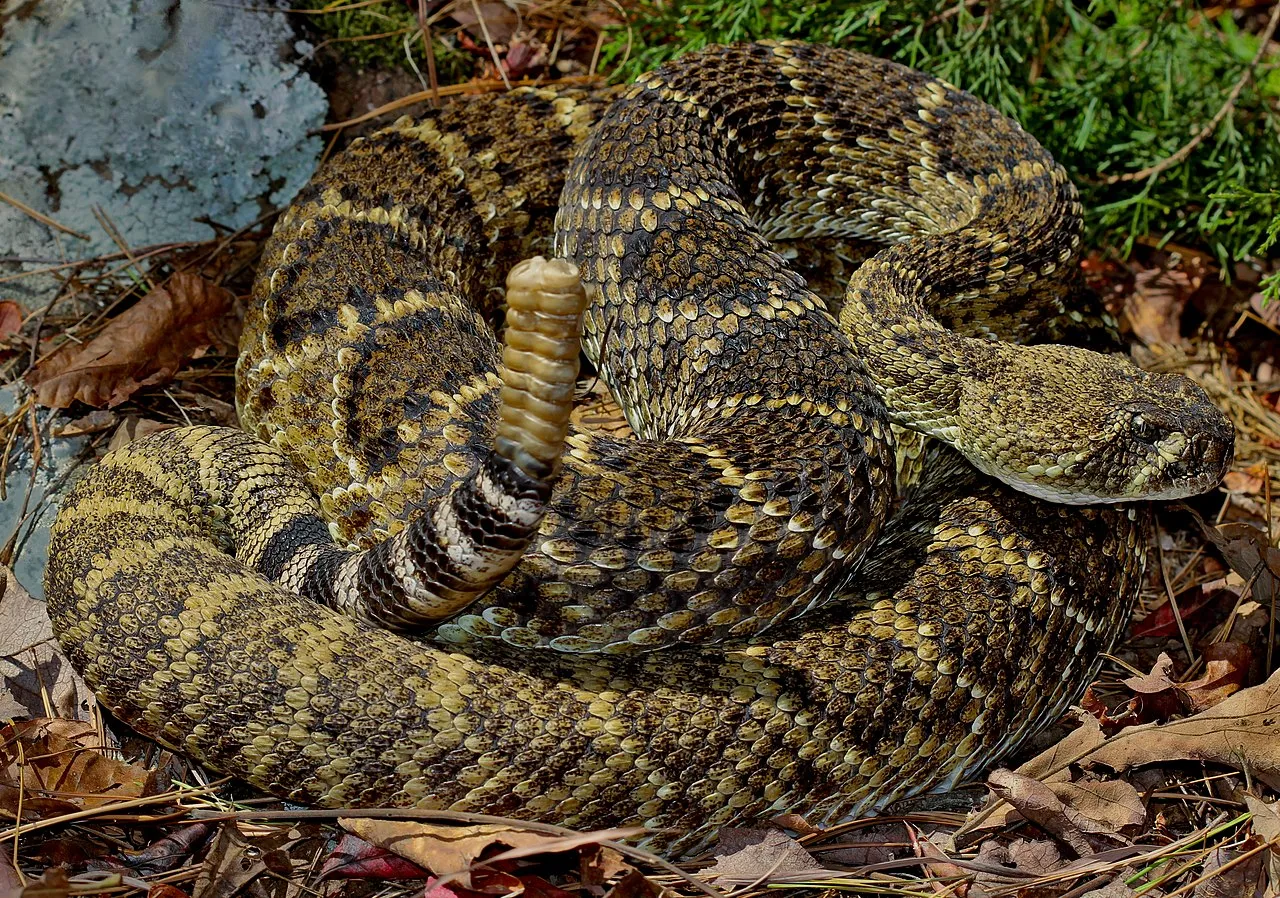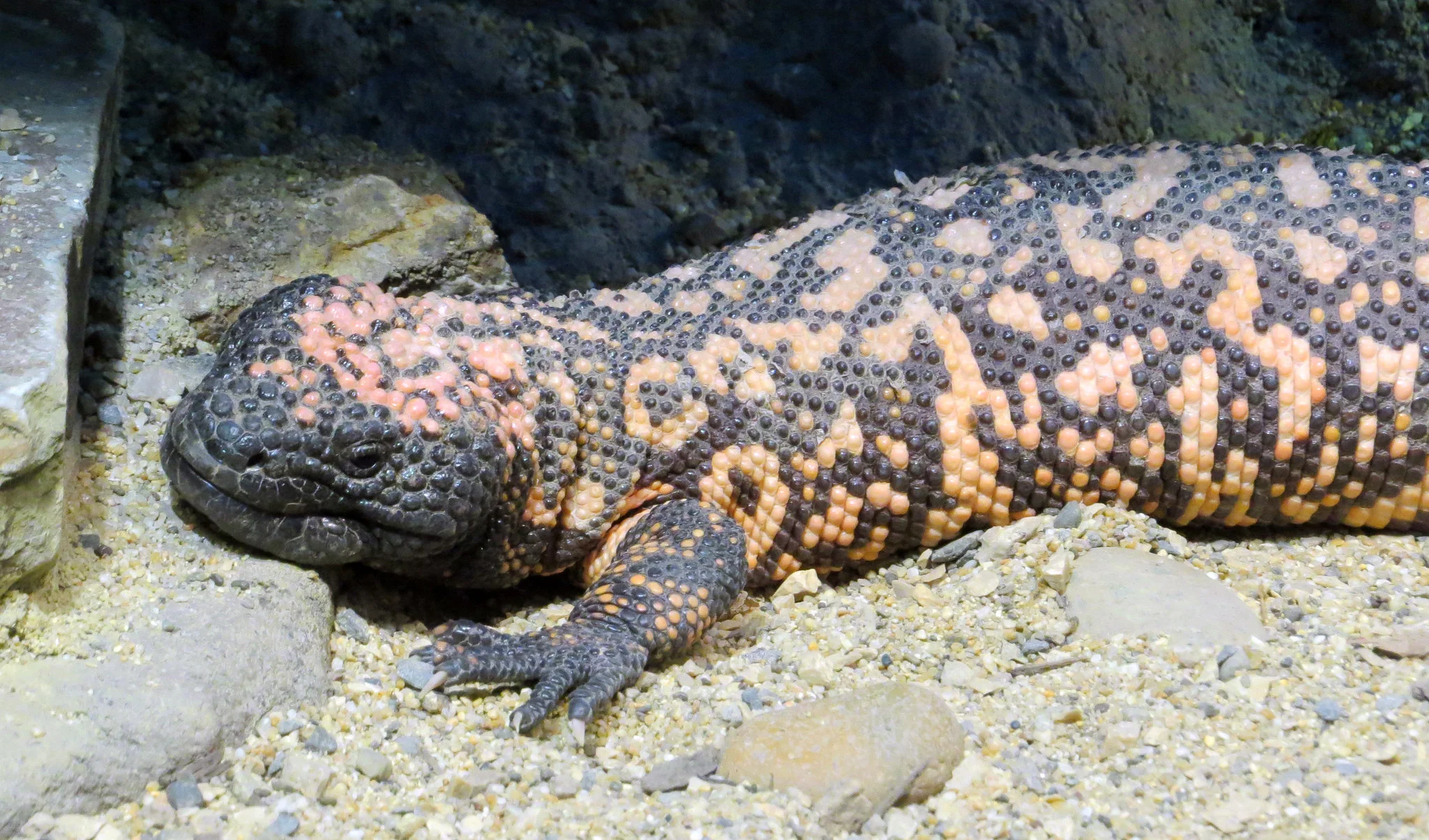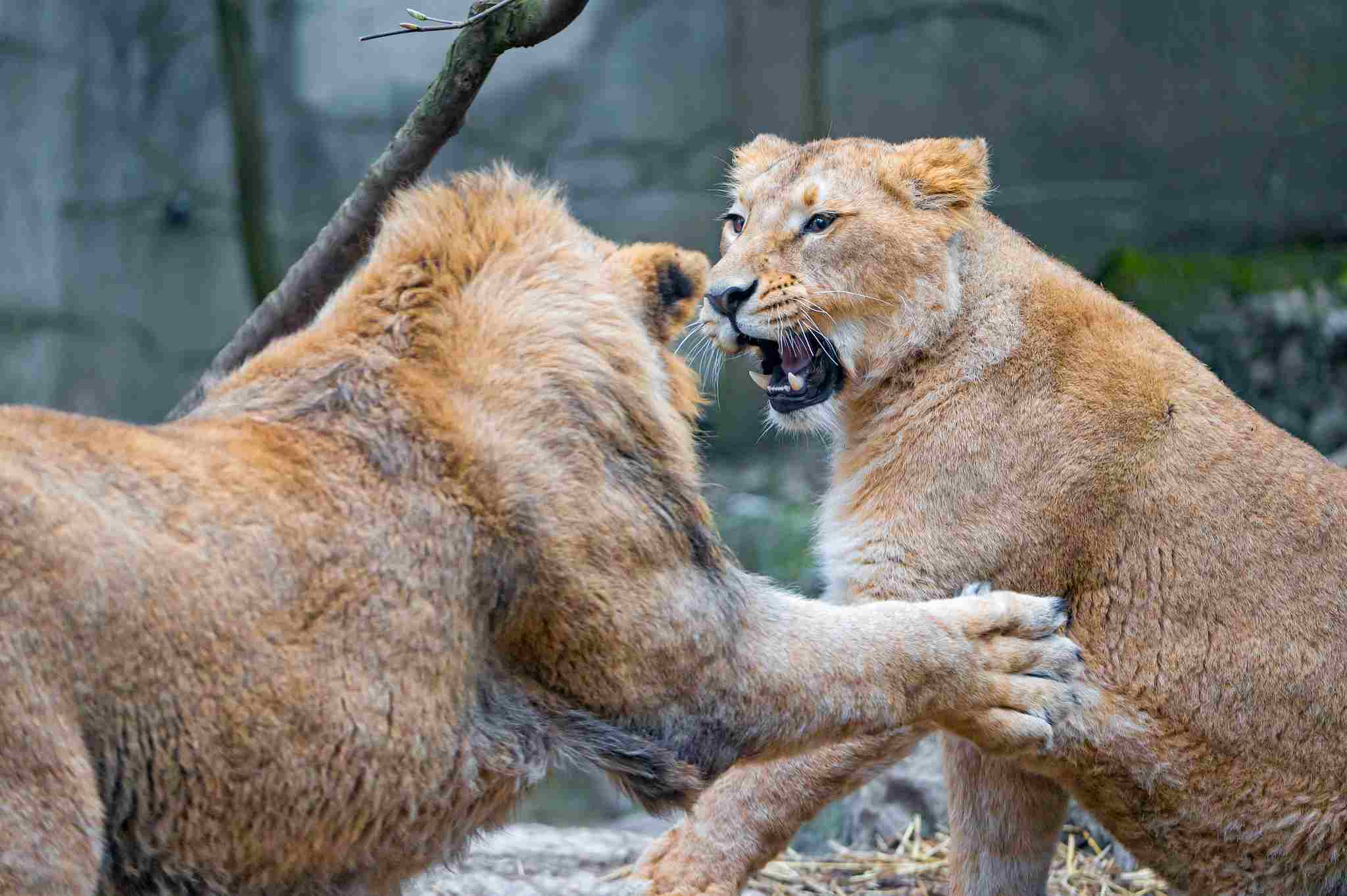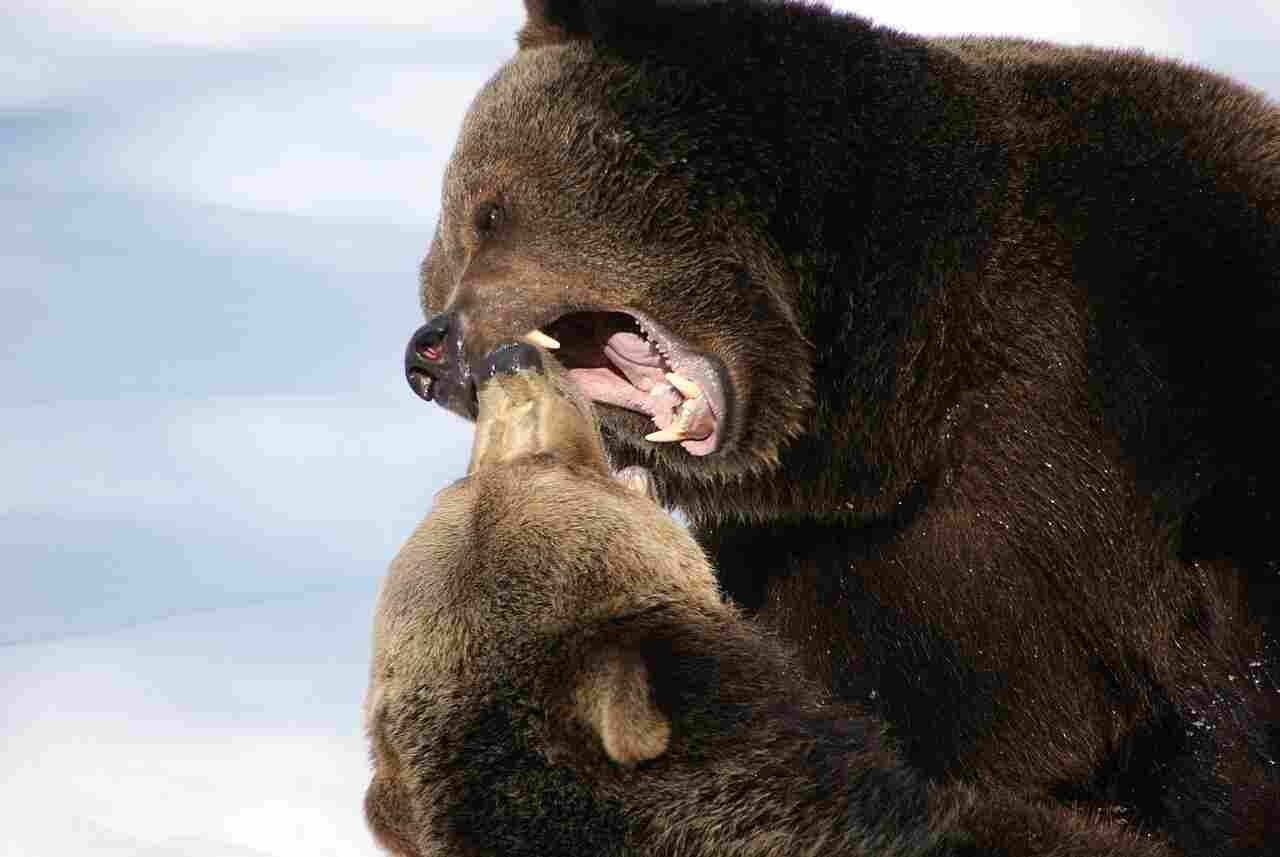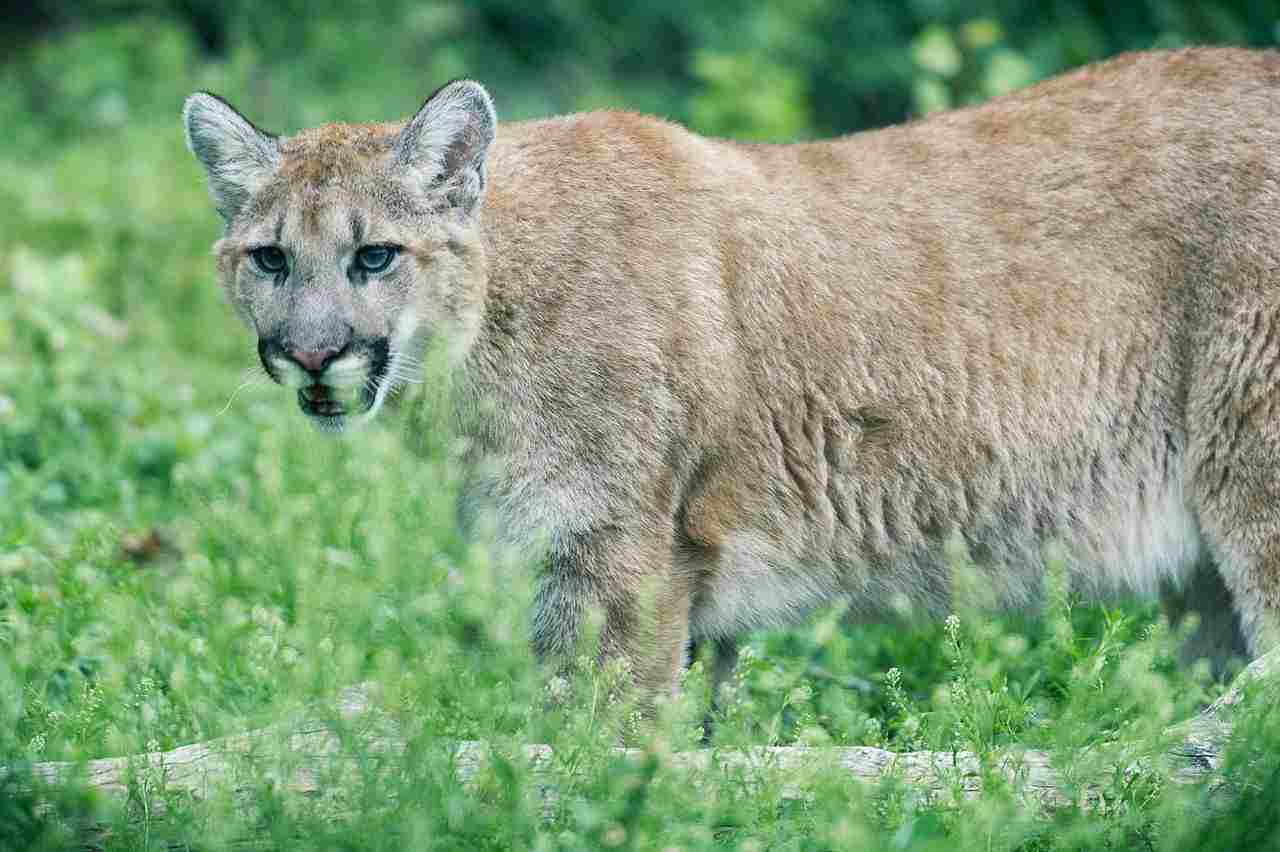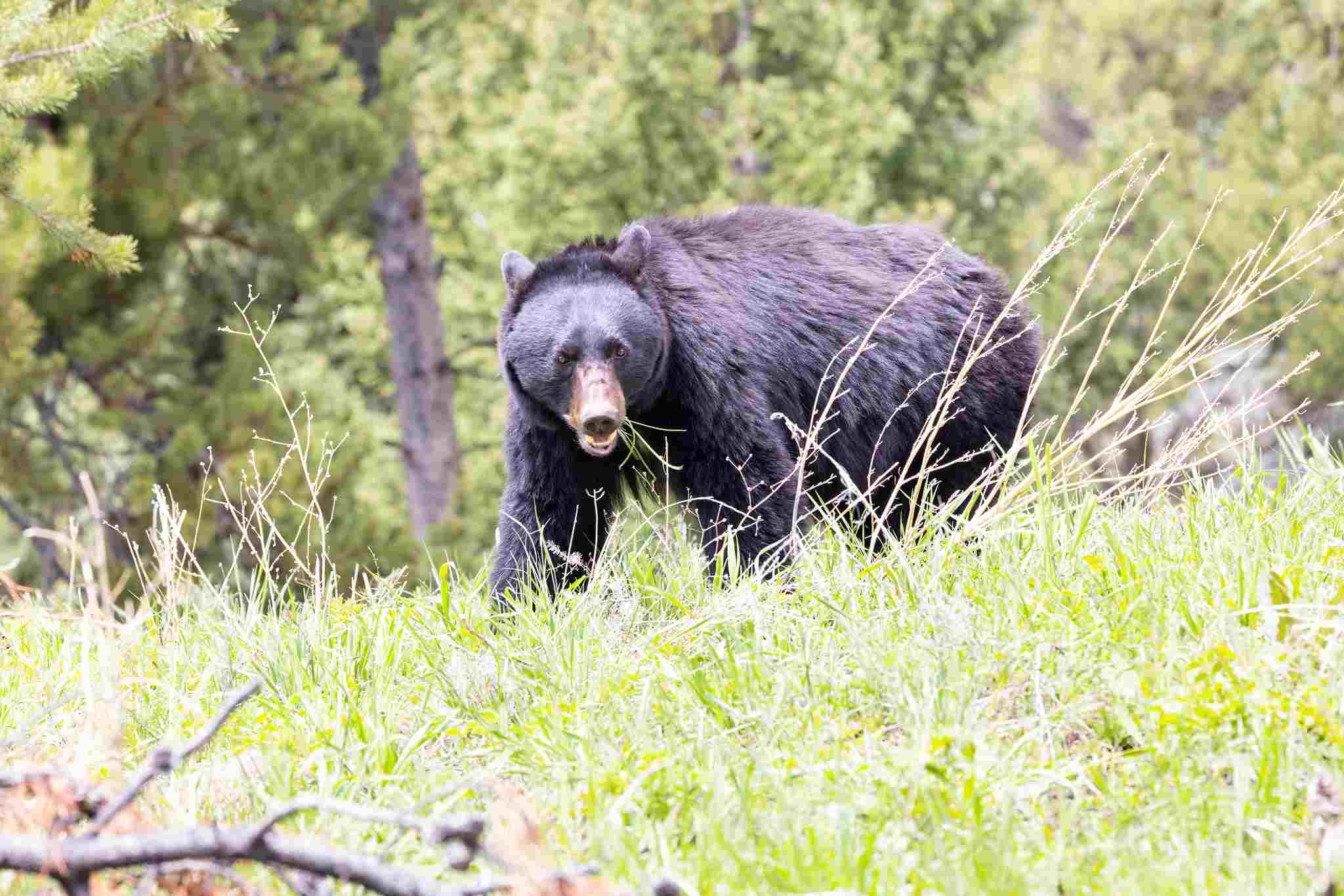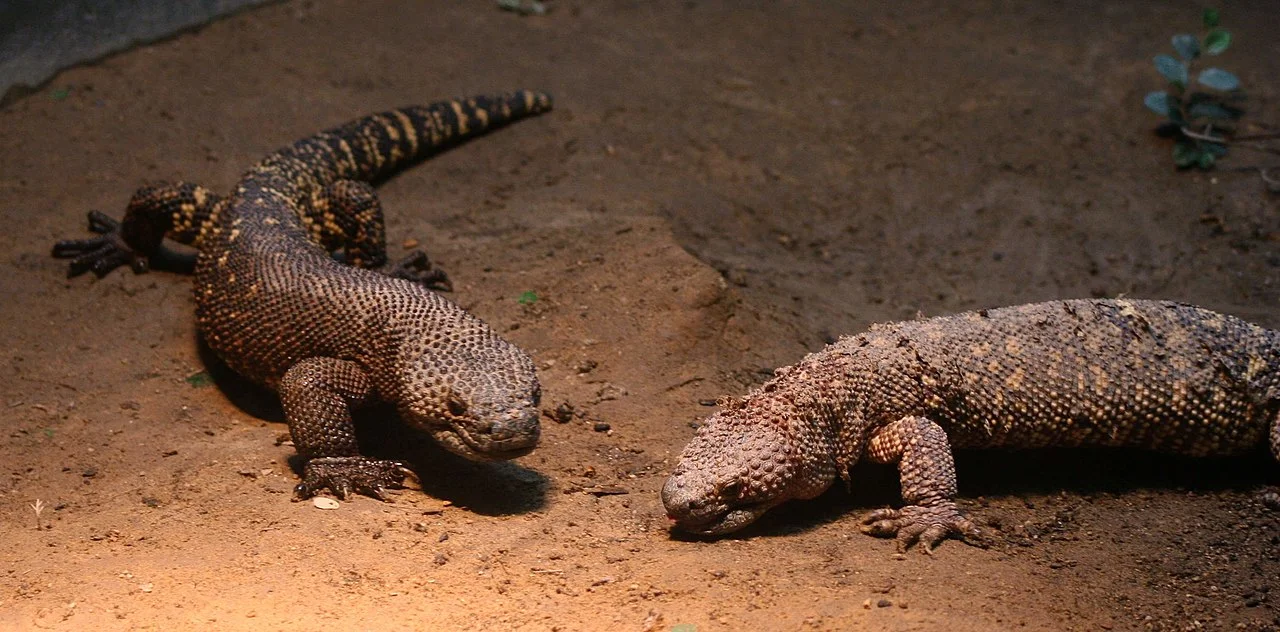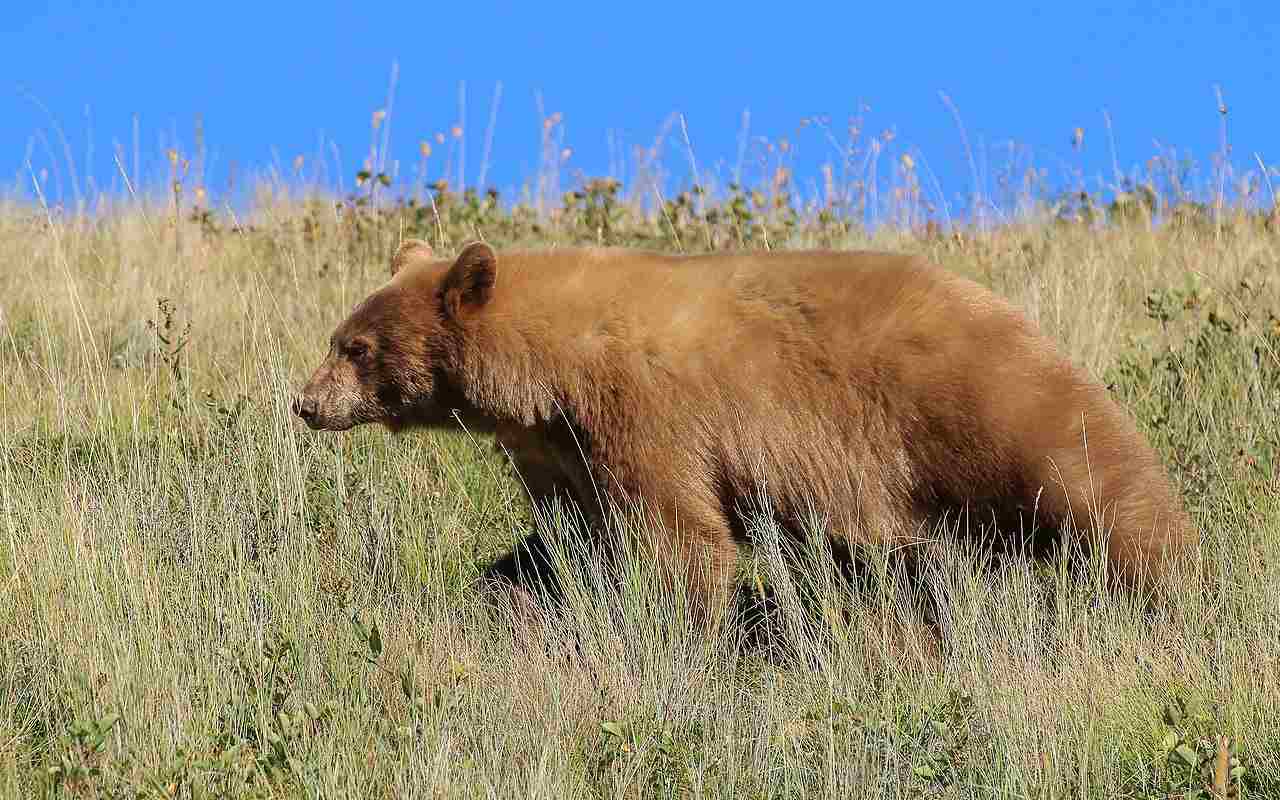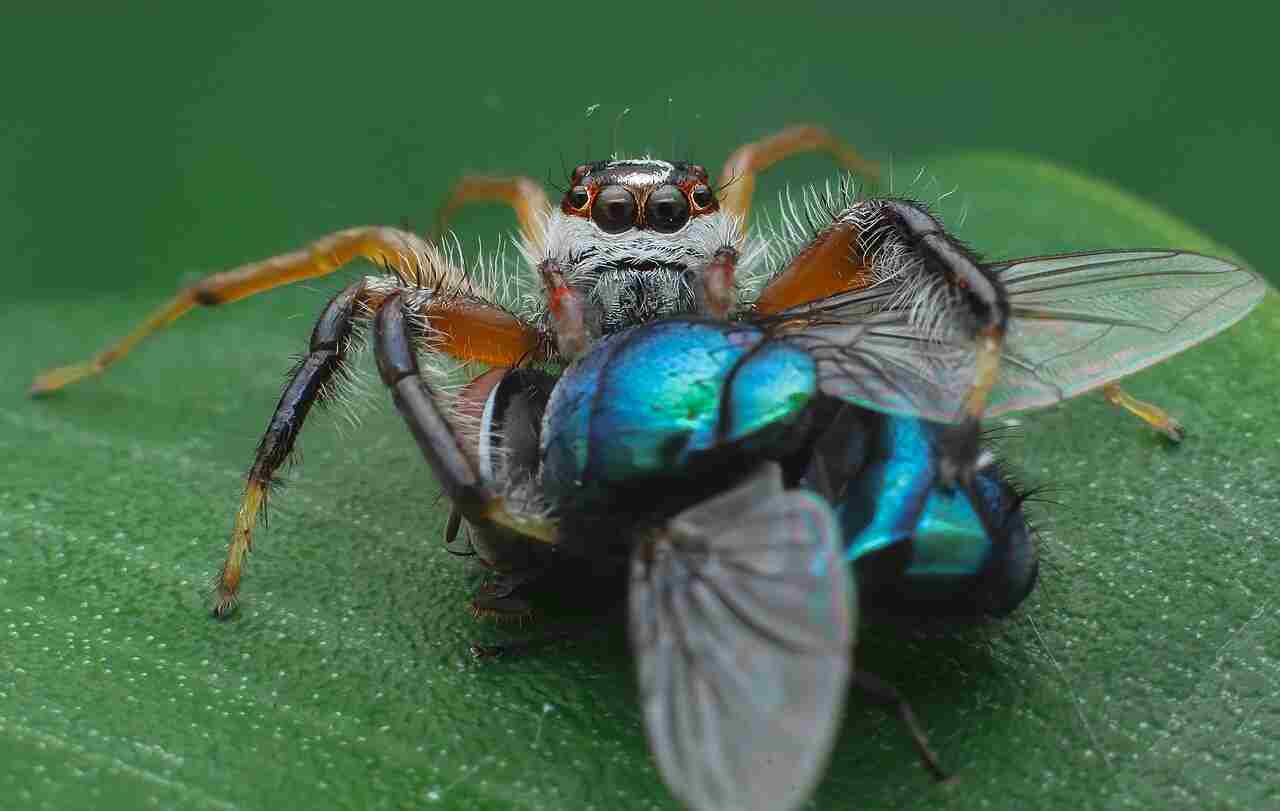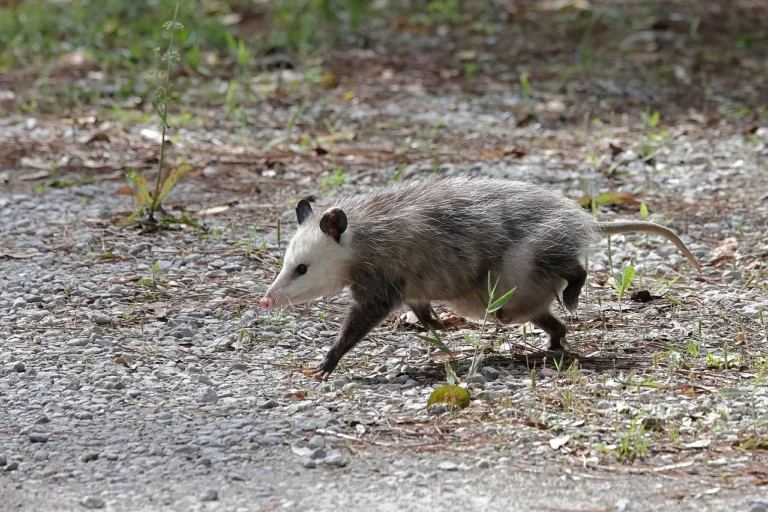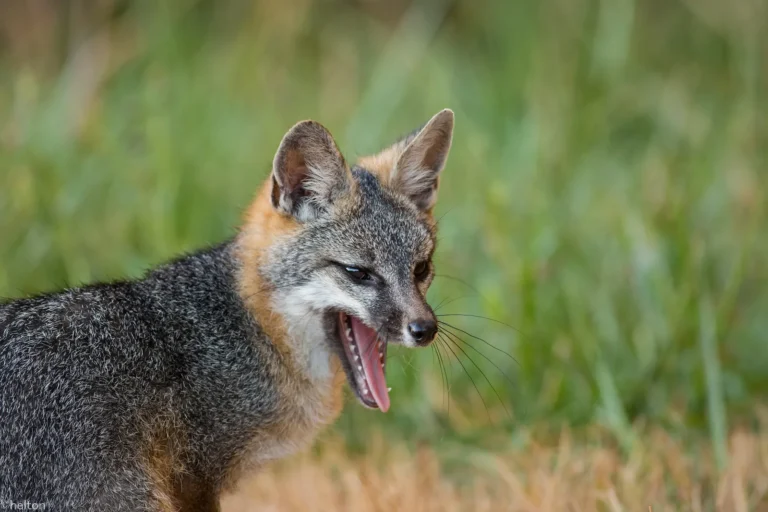23+ Dangerous Animals In The Grand Canyon Discussed
1. Mountain Lion (Cougar)
The Mountain Lion, also known as the Cougar, is a powerful and elusive predator found in the Grand Canyon. As apex predators, they play a crucial role in maintaining the balance of the ecosystem, controlling populations of other animals like deer. However, these big cats can pose a danger to humans and pets, especially when their natural prey is scarce. Cougars are typically shy and avoid human contact, but encounters can happen, particularly in remote areas or during dawn and dusk when they are most active. It’s essential to remain aware of your surroundings, keep pets on a leash, and make noise while hiking to avoid surprising a Mountain Lion. If you encounter one, maintain eye contact, make yourself look larger, and back away slowly, never turning your back on the animal or running.
2. Rattlesnake
Rattlesnakes are a common sight in the Grand Canyon, known for their distinctive rattling sound that serves as a warning to potential threats. These venomous snakes inhabit rocky areas, canyons, and desert landscapes, making encounters possible, especially during warmer months when they are more active. While their venom can be dangerous, rattlesnakes usually only strike when provoked or startled. To minimize the risk of an encounter, hikers should stay on designated trails, wear sturdy boots, and be cautious when stepping over rocks or logs where snakes may be hiding.
3. Black Widow Spider
The presence of Black Widow Spiders in the Grand Canyon adds another element of caution for visitors exploring its diverse landscapes. These venomous arachnids are known for their shiny black bodies and red hourglass-shaped markings. While their bites are rarely fatal to humans, they can cause severe pain and discomfort. Black Widows typically inhabit dark, sheltered areas such as caves, crevices, and woodpiles. Visitors should be vigilant, especially when reaching into hidden spaces or handling outdoor equipment.
4. Elk
Elk are magnificent creatures that roam the forests and meadows of the Grand Canyon, attracting many visitors eager to catch a glimpse of these majestic animals. However, despite their seemingly docile nature, elk can become aggressive, especially during mating season or when protecting their young. Encounters with elk should be approached with caution, and visitors should maintain a safe distance, never attempting to approach or feed them. Keeping pets on a leash and being aware of elk warning signs, such as raised hackles or vocalizations, can help prevent potential conflicts.
5. Bison

Bison, the iconic symbol of the American West, also inhabit the Grand Canyon’s vast wilderness areas. These massive animals may appear calm and placid, but they can be unpredictable and potentially dangerous, especially if provoked. Visitors should always maintain a safe distance from bison, never approaching closer than 25 yards. Additionally, drivers should be cautious when traveling through areas where bison are known to roam, as these animals often wander onto roadways.
6. Rocky Mountain Goat
Rocky Mountain Goats, with their shaggy white coats and impressive horns, are well-adapted to the rugged terrain of the Grand Canyon. While they typically inhabit high-altitude rocky areas, they may venture into lower elevations in search of food or salt deposits. Encounters with Rocky Mountain Goats are generally peaceful, but visitors should still exercise caution and avoid approaching too closely. Feeding or attempting to interact with these wild animals is prohibited and can result in fines or injury.
7. Bald Eagle
The majestic Bald Eagle, a symbol of strength and freedom, can be spotted soaring high above the Grand Canyon’s skies. These magnificent birds of prey primarily feed on fish and carrion but may also hunt small mammals and birds. While encounters with Bald Eagles are typically rare for visitors on the ground, they serve as a reminder of the region’s rich biodiversity and the importance of preserving their habitat.
8. Coyote
Coyotes, with their keen intelligence and adaptability, are a common sight in the Grand Canyon’s diverse ecosystems. These cunning predators play a vital role in controlling rodent populations and scavenging carrion. While encounters with coyotes are usually harmless, visitors should never feed or approach them, as they are wild animals capable of defensive aggression. Keeping pets on a leash and securing food and garbage can help prevent unwanted interactions with coyotes.
9. Gila Monster
The Gila Monster, a venomous lizard native to the southwestern United States, is one of the Grand Canyon’s lesser-known but still potentially dangerous inhabitants. With its distinctive orange and black markings, this slow-moving reptile may seem harmless, but its venomous bite can cause intense pain and discomfort. Visitors should admire Gila Monsters from a safe distance and avoid handling or disturbing them to minimize the risk of injury.
10. Scorpion
Scorpions, with their intimidating appearance and venomous sting, are another notable inhabitant of the Grand Canyon’s arid landscapes. While encounters with scorpions are rare, visitors should be cautious when exploring rocky areas or camping overnight. Using a flashlight at night and shaking out clothing and bedding before use can help prevent unwanted encounters with these nocturnal predators.
11. Black Bear
Black Bears, though less common than other large mammals in the Grand Canyon, still inhabit its forests and mountainous regions. These omnivorous animals primarily feed on plants, berries, and insects but may also scavenge for food in campsites or picnic areas. To minimize the risk of bear encounters, visitors should store food and garbage in bear-proof containers, maintain a clean campsite, and make noise while hiking to alert bears of their presence.
12. Bobcat
Bobcats, with their distinctive spotted coats and tufted ears, are elusive predators that roam the Grand Canyon’s wilderness areas. These solitary hunters primarily feed on small mammals and birds, using stealth and agility to stalk their prey. While encounters with bobcats are rare, visitors should be observant and avoid approaching or attempting to feed them. Respecting these wild animals’ space helps ensure their continued presence in the ecosystem.
13. Tarantula
Tarantulas, with their large size and hairy appearance, are a source of fascination and fear for many visitors to the Grand Canyon. Despite their intimidating appearance, these spiders are generally harmless to humans, with venom comparable to a bee sting. Tarantulas are nocturnal hunters, emerging at night to search for insects and other prey. While encounters with tarantulas are unlikely, visitors should be cautious when exploring rocky areas or camping overnight.
14. Mule Deer (due to vehicular collisions)
Mule Deer, with their large ears and graceful movements, are a common sight along roadsides and in meadows throughout the Grand Canyon. While these herbivorous animals typically pose little threat to humans, vehicular collisions can occur, especially during dawn and dusk when deer are most active. Drivers should exercise caution, obey speed limits, and remain vigilant for deer crossing roadways, particularly in areas where signs indicate frequent wildlife crossings.
15. Roadrunner (venomous bite)
The Roadrunner, famous for its rapid ground-running abilities and distinctive appearance, is a fascinating bird species found in the Grand Canyon’s desert landscapes. While encounters with Roadrunners are generally harmless, visitors should be aware that they possess a sharp beak and strong legs that they may use for self-defense. Respectful observation from a distance allows visitors to appreciate these unique birds without risking injury.
16. Ringtail Cat
The Ringtail Cat, also known as the “miner’s cat” or “ringtail,” is a nocturnal mammal native to the southwestern United States, including the Grand Canyon. With its fox-like face and long, bushy tail banded with black and white rings, the Ringtail Cat is a distinctive and elusive creature. While encounters with Ringtail Cats are rare due to their nocturnal habits, visitors may occasionally glimpse these agile climbers hunting for insects or small mammals in rocky areas or desert scrub.
17. Western Diamondback Rattlesnake
The Western Diamondback Rattlesnake, with its distinctive diamond-shaped pattern and rattling tail, is a venomous snake species found in the Grand Canyon’s desert and rocky habitats. While encounters with these snakes can be dangerous, they usually avoid human contact, using their rattling sound as a warning. To minimize the risk of a bite, visitors should stay on marked trails, wear sturdy boots, and avoid reaching into hidden crevices or under rocks where snakes may be hiding.
18. Rock Squirrel (aggressive behavior)
Rock Squirrels, often considered harmless, can exhibit aggressive behavior when they feel threatened or when they are defending their territory or food sources. These rodents are common in the Grand Canyon and are often seen near picnic areas, campsites, and trails. While they may seem cute, visitors should never feed or approach Rock Squirrels, as they can bite or scratch when provoked. Properly securing food and garbage helps prevent unwanted interactions with these potentially aggressive creatures.
19. Western Screech Owl
The Western Screech Owl is a small but fierce nocturnal bird of prey found in the Grand Canyon’s forests and woodlands. With its distinctive ear tufts and haunting calls, this owl hunts insects and small mammals at night. While generally not a direct threat to humans, visitors should be cautious when exploring dense foliage at night to avoid startling these owls. Encounters are rare, but a screeching owl can be disorienting and cause a scare if encountered suddenly.
20. California Condor
The California Condor, one of the world’s largest flying birds, has made a successful comeback in the Grand Canyon area after near extinction. With a wingspan of up to 10 feet, these impressive scavengers feed on carrion. While they are not typically aggressive toward humans, their large size and powerful beaks can pose a danger, especially if they feel threatened or if they are protecting a food source. Visitors should admire these birds from a distance and avoid feeding or approaching them.
21. Great Horned Owl
The Great Horned Owl is one of the most common and adaptable owls in North America, inhabiting a range of environments, including the Grand Canyon. Known for its large size, prominent ear tufts, and deep hooting calls, this owl primarily hunts at night, feeding on small mammals and birds. While typically not a threat to humans, visitors should be aware of their presence, especially in densely wooded areas, and avoid disturbing their nesting sites to prevent aggressive behavior.
22. Turkey Vulture
The Turkey Vulture is a common sight soaring above the Grand Canyon’s skies, using its keen sense of smell to locate carrion for food. With a large wingspan and bald red head, these birds play an important role in the ecosystem by cleaning up carcasses. Although they are not aggressive toward humans, their presence can be intimidating due to their size and scavenging behavior. Visitors should avoid approaching Turkey Vultures or attempting to interact with them.
23. Peregrine Falcon
The Peregrine Falcon is renowned for being one of the fastest animals on Earth, often seen diving at high speeds to catch prey. In the Grand Canyon, these agile birds of prey nest on high cliffs and hunt smaller birds and mammals. While encounters with humans are rare, visitors should avoid disturbing their nesting sites, as they may exhibit aggressive behavior if they feel threatened. Observing Peregrine Falcons from a safe distance allows visitors to appreciate their speed and agility without risking injury.
24. Bighorn Sheep
The Bighorn Sheep is an iconic animal in the Grand Canyon, known for its massive curved horns and agility in navigating rocky terrain. These sheep are generally peaceful but can become aggressive during mating season or when defending their territory. Visitors should maintain a safe distance and never attempt to feed or approach them. Bighorn Sheep are often seen on cliff edges, and disturbing them could result in rockslides or other hazards.
| Animal | Description |
| Mountain Lion (Cougar) |
Powerful and elusive predator; potentially dangerous when encountered.
|
| Rattlesnake |
Venomous snake; known for its distinctive rattling sound.
|
| Black Widow Spider |
Venomous spider; recognizable by its black body and red hourglass marking.
|
| Elk |
Large herbivores; can be aggressive during mating season.
|
| Bison |
Massive animals; unpredictable and potentially dangerous.
|
| Rocky Mountain Goat |
Rugged terrain-dwellers; avoid approaching them.
|
| Bald Eagle |
Majestic bird of prey; rare encounters with humans.
|
| Coyote |
Common predator; generally harmless but avoid feeding them.
|
| Gila Monster |
Venomous lizard; slow-moving but has a painful bite.
|
| Scorpion |
Venomous arthropod; active at night.
|
| Black Bear |
Omnivorous bear; secure food to prevent encounters.
|
| Bobcat |
Elusive predator; generally avoids humans.
|
| Tarantula |
Large, hairy spider; generally harmless to humans.
|
| Mule Deer (vehicular collisions) |
Herbivores; can cause accidents on roads.
|
| Roadrunner |
Fast-running bird; possesses a sharp beak.
|
| Ringtail Cat |
Nocturnal mammal; rarely encountered by humans.
|
| Western Diamondback Rattlesnake |
Venomous snake; known for its distinctive diamond pattern.
|
| Rock Squirrel |
Rodent; can exhibit aggressive behavior.
|
| Western Screech Owl |
Small nocturnal owl; can be intimidating at night.
|
| California Condor |
Large scavenging bird; potentially dangerous due to size.
|
| Great Horned Owl |
Large nocturnal owl; avoid disturbing their nesting sites.
|
| Turkey Vulture |
Large scavenger; not aggressive toward humans.
|
| Peregrine Falcon |
Fastest bird; avoid disturbing their nests.
|
| Bighorn Sheep |
Iconic sheep with large horns; can be aggressive during mating season.
|
